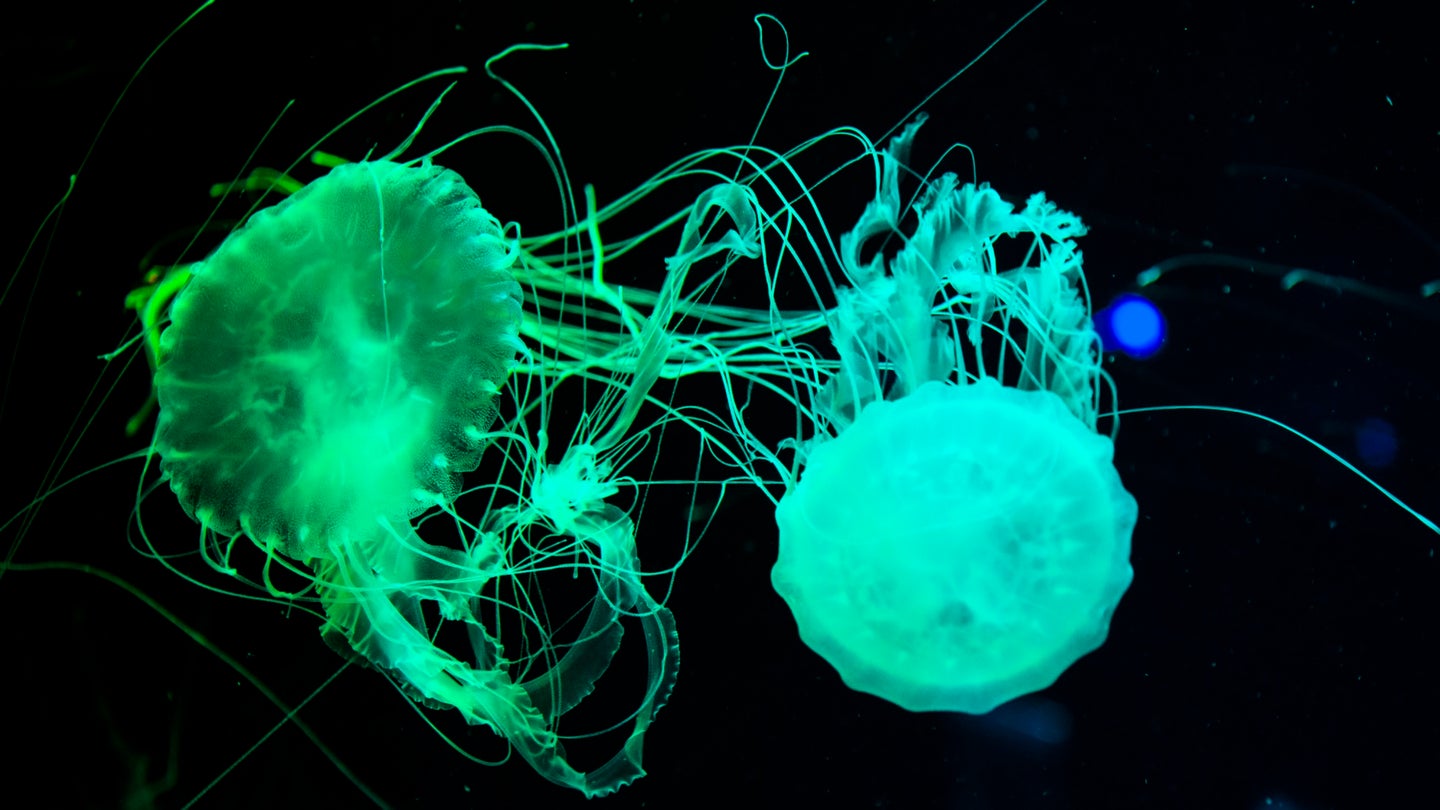
Imagine a crime scene. Chances are, you’re also imagining someone dusting for fingerprints. Despite recent debates of whether fingerprint evidence is accurate and reliable, it can still prove extremely useful in certain situations, such as narrowing down potential suspect lists. Unfortunately, this technique often employs toxic powders, including environmentally harmful petrochemicals that can damage DNA evidence.
[Related: The racist history behind using biology in criminology.]
Thanks to a collaboration between scientists from the UK’s University of Bath and China’s Shanghai Normal University, this may change in the future. In a new study published in the Journal of the American Chemical Society, researchers laid out their case for a novel method of lifting latent fingerprints—a water soluble spray that is not only safer and faster, but easier to examine thanks to its ability to glow in the dark.
It all started with a tip-off from jellyfish.
For millions of years, many of these ocean invertebrates have contained Green Fluorescent Protein (GFP), which are fluorescent under certain lighting conditions. Knowing this, the team created two different dyes, LFP-Yellow and LFP-Red, that are based on the protein found in jellyfish. Short for “latent fingerprints,” LFP-Yellow and LFP-Red are applied using a simple spray bottle, which then selectively binds to negatively-charged molecules within fingerprints. Once stuck to the residual prints, the dyes begin to glow under blue light in just 10 seconds.
Interestingly, the solution is only “weakly fluorescent” before applied to LFPs, according to University of Bath researcher, Luling Wu, in a recent profile. It’s only once the dyes interact with fingerprint’s fatty or amino acids created by skin oil and sweat that they glow brighter.
Because it is applied as a fine mist, forensics examiners don’t need to worry about splashes that could potentially disturb prints. It also avoids the mess that often accompanies dusting with frequently toxic powders, and is even effective on rougher surfaces like concrete or brick.
Going forward, researchers hope to make their less harmful solution available commercially, as well as expand on the number of fluorescent colors to ensure use across a wider array of surfaces. Forensic analysts may not consider fingerprint evidence as ironclad as before, but with alternative methods of detection, they could soon lift them more accurately and safely. What’s more, doing so won’t risk damaging any nearby, much more sought after DNA clues.
The post Jellyfish-inspired glowing dye can glom onto fingerprints at crime scenes appeared first on Popular Science.
Articles may contain affiliate links which enable us to share in the revenue of any purchases made.
from Popular Science https://ift.tt/TxUNE7v




0 Comments